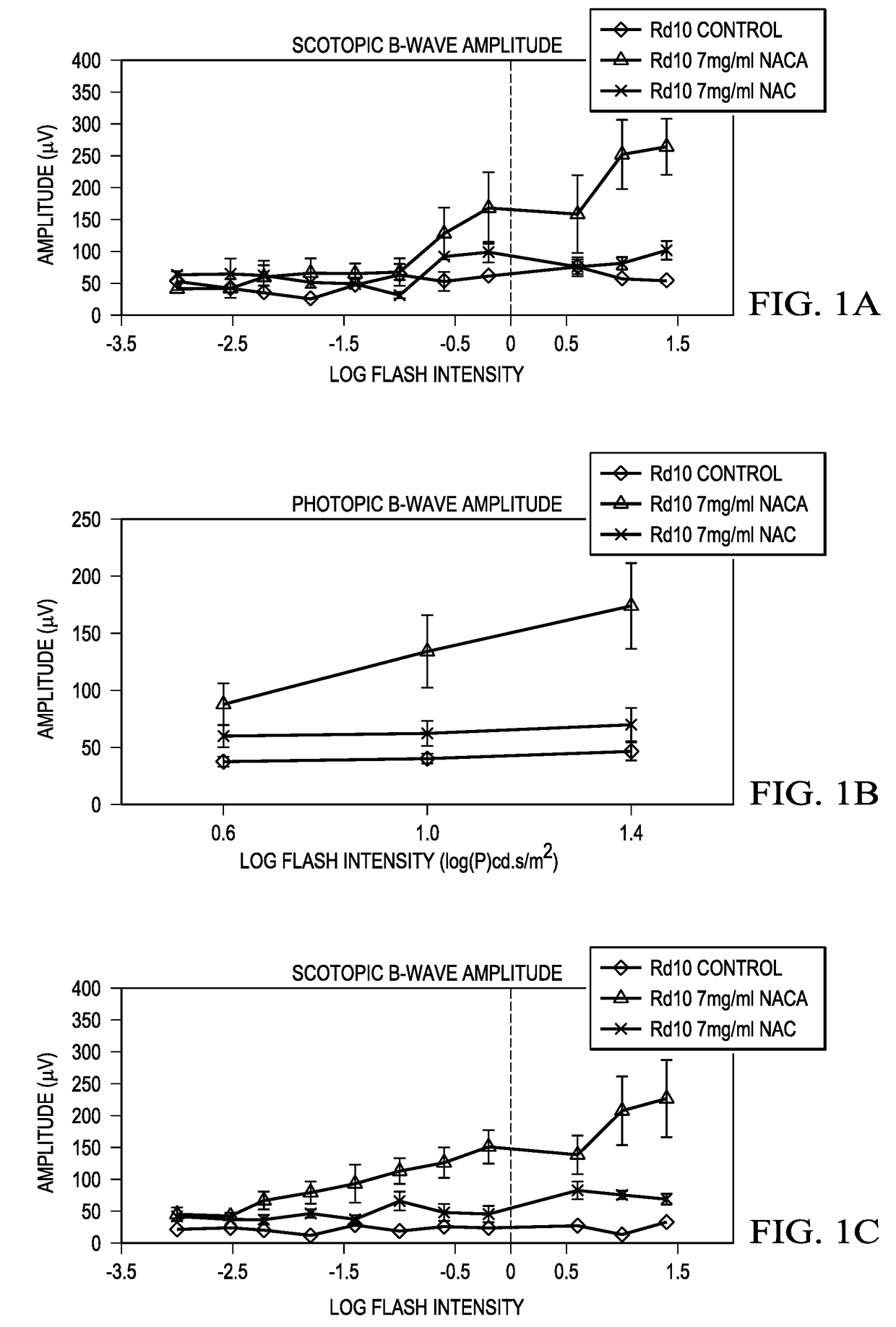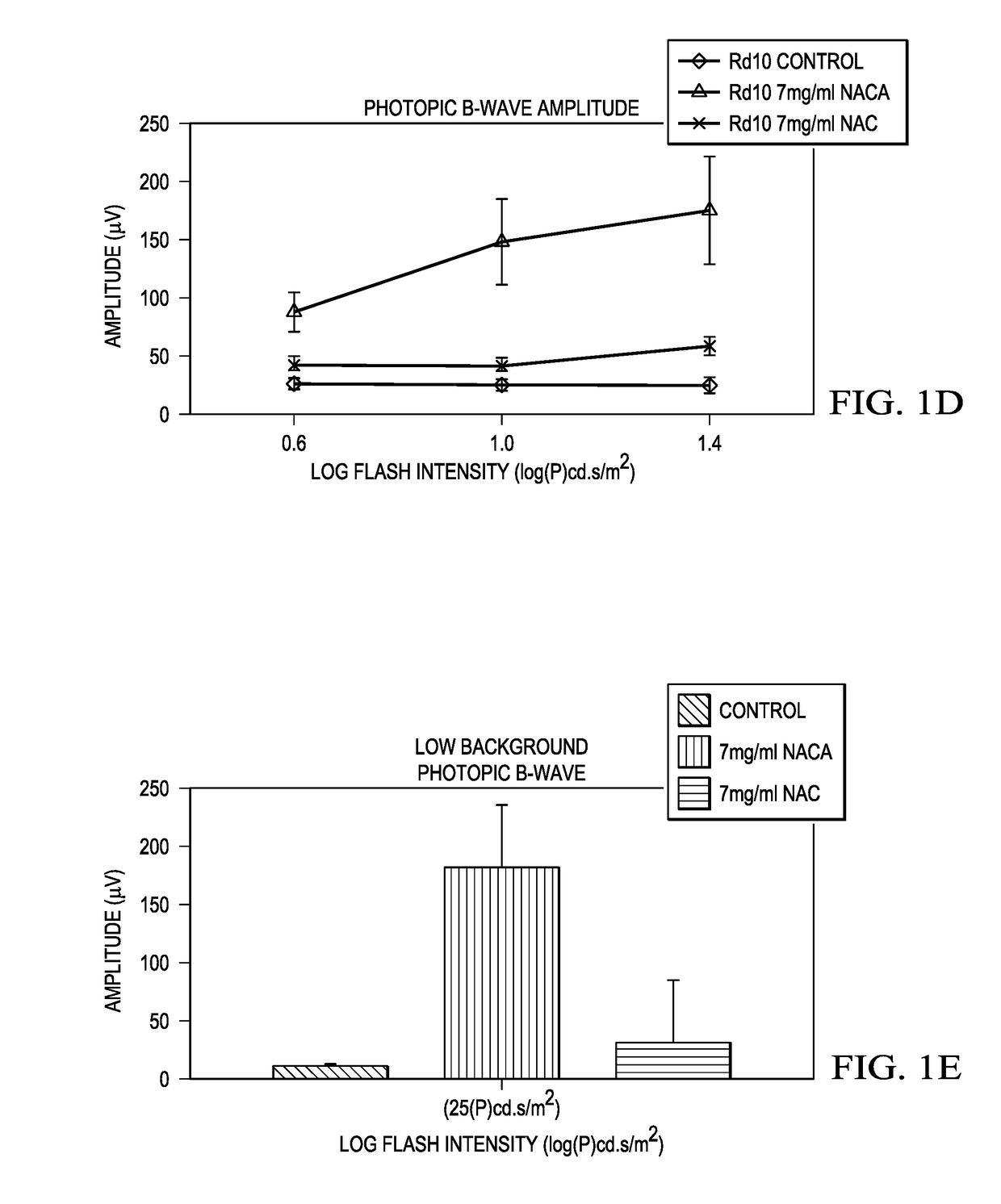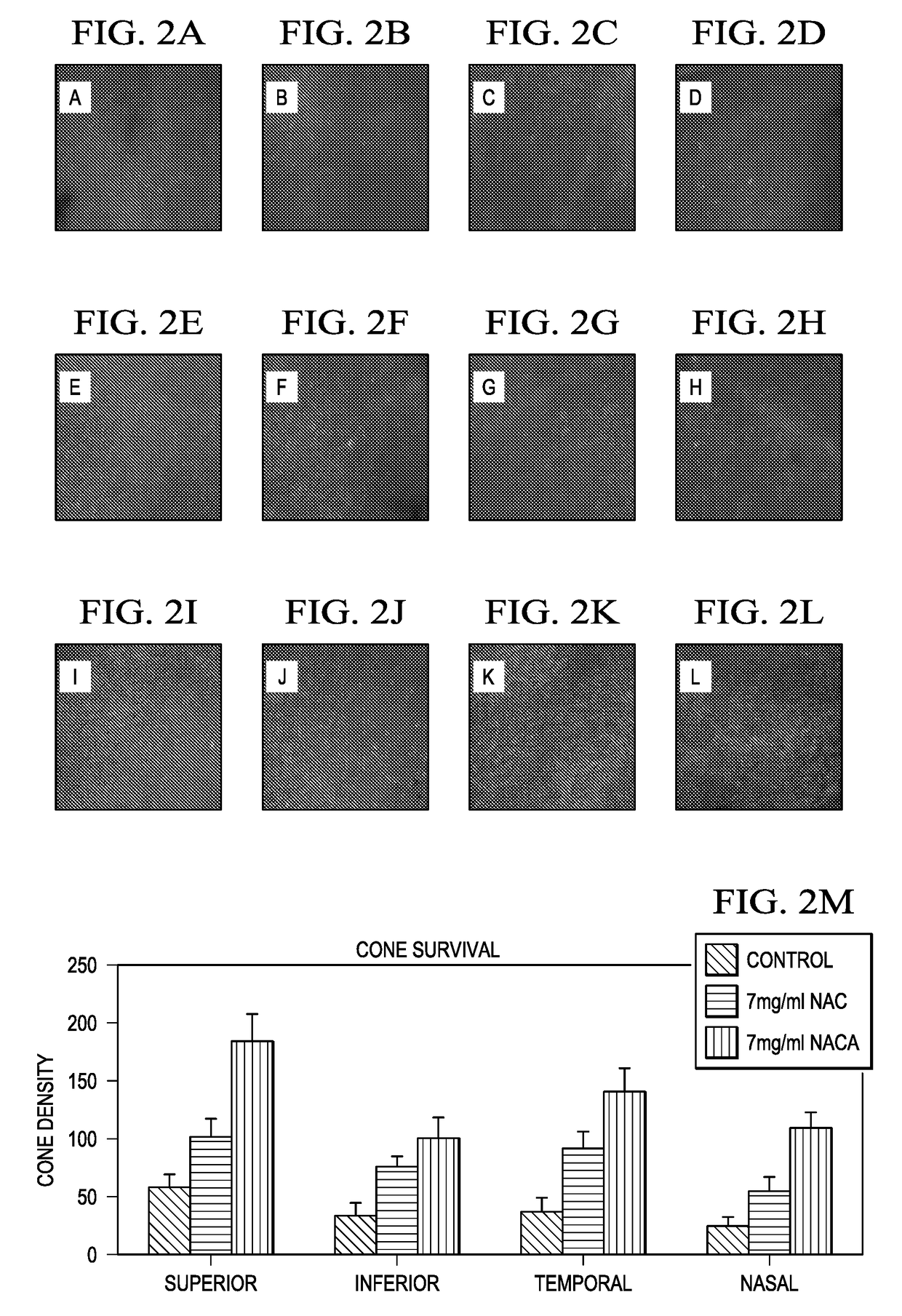Treatment of Retinitis Pigmentosa with N-Acetylcysteine Amide
a technology of retinitis pigmentosa and n-acetylcysteine, which is applied in the direction of drug compositions, pharmaceutical delivery mechanisms, medical preparations, etc., can solve the problems of severe oxidative stress in the outer retina, reduced cellular function and eventually apoptosis, and impaired function, so as to prevent retinitis pigmentosa and prevent retinitis pigmentosa
- Summary
- Abstract
- Description
- Claims
- Application Information
AI Technical Summary
Benefits of technology
Problems solved by technology
Method used
Image
Examples
examples
[0063]Starting at postnatal day (P) 14, rd10+ / + mice were given normal drinking water (n=6) or water containing 7 mg / ml NACA, or 7 mg / ml NAC, or 20 mg / ml NAC (n=8 for each group). Scotopic and photopic electroretinograms (ERGs) were recorded at P35. Scotopic, photopic and low background photopic ERGs were recorded at P50.
[0064]Cone density was measured at P50 in four 230 mm×230 mm (512×512 pixels) areas located 0.5 mm superior, temporal, inferior, and nasal to the center of the optic nerve in retinal flat mounts stained with fluorescein-labeled peanut agglutinin (PNA).
[0065]It was found that, at P35, both mean peak scotopic ERG b-wave amplitude and means peak photopic b-wave amplitude in rd10+ / + mice treated with 7 mg / ml NACA were more than 2-fold greater than those in rd10+ / + mice treated with 7 mg / ml NAC, and 3-fold greater than those in control rd10+ / + mice. At P50, scotopic and photopic ERG b-waves in NACA-treated mice showed 3-fold greater amplitudes than those in rd10+ / +mice t...
PUM
| Property | Measurement | Unit |
|---|---|---|
| molecular weight | aaaaa | aaaaa |
| molecular weight | aaaaa | aaaaa |
| molecular weight | aaaaa | aaaaa |
Abstract
Description
Claims
Application Information
 Login to View More
Login to View More - R&D
- Intellectual Property
- Life Sciences
- Materials
- Tech Scout
- Unparalleled Data Quality
- Higher Quality Content
- 60% Fewer Hallucinations
Browse by: Latest US Patents, China's latest patents, Technical Efficacy Thesaurus, Application Domain, Technology Topic, Popular Technical Reports.
© 2025 PatSnap. All rights reserved.Legal|Privacy policy|Modern Slavery Act Transparency Statement|Sitemap|About US| Contact US: help@patsnap.com



